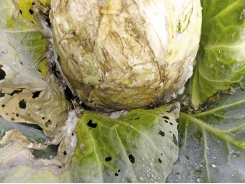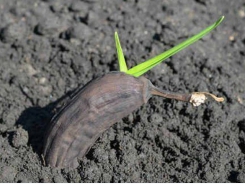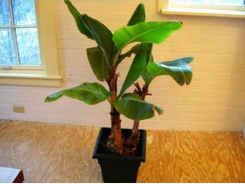How to Grow Tomatoes

Being natives of South America, tomatoes don’t take too kindly to our short, cold and clouded summers. But ever since they were introduced into this country in the sixteenth century they have steadily risen in our esteem, and probably more British gardening man-hours have been devoted to overcoming the problems of growing tomatoes than to any other edible plant. It seems ironic now that they were originally grown for their decorative qualities and that the fruits were thought poisonous. The tomato does, after all, belong to the deadly nightshade family.
Most tomatoes are what are technically known as ‘indeterminate’ in growth. Given a suitable climate, they will go on growing almost ad infinitum, throwing out numerous vigorous side-shoots which in turn bear flowers and fruit and go on growing. However, a few varieties are naturally dwarf, ceasing to grow once they are 30-60cm (1-2ft) high and remaining a compact bush. On the whole these dwarf types crop earlier and are more suitable for outdoor cultivation. They are also convenient for growing under cloches.
The tall types make more economic use of valuable greenhouse space. They have to be supported, and this is easily done by tying them to or twisting them around wires or strings, fixed securely to run from the greenhouse roof to ground level. Alternatively, indoors or out, they can be tied to strong canes, or to horizontal wires stretched between posts.
The tomato plant’s yearning to keep growing has to be curbed or its energies are expended on vegetative growth rather than fruit. So side-shoots have to be nipped out (side-shooting) and eventually the growing point has to be cut off a couple of leaves above a flowering truss (stopping). Outdoor plants are usually stopped at the end of July or early August, allowing about three trusses to fruit in northern districts, and four or five in the south. Under glass, plants can be stopped later to leave six, seven or more fruiting trusses. One advantage of bush tomatoes is that they require no, or very little, side-shooting, stopping or staking.
Growing Tomatoes Outdoors
Growing tomatoes outdoors, you will find that they are always at the mercy of the weather. Outdoor tomatoes can do very well in warm summers in the warmer parts of the country, but are always a poor risk in the North. Any protection they can be given with cloches, frames, or even with nylon windbreak netting, increases the chances of obtaining a useful crop.
If you are starting your outdoor tomatoes from seed, sow indoors or under glass in early April; the method is the same as for unheated greenhouses.
Tomatoes can be planted directly in the ground, or grown in pots or growing bags which can, of course, be put anywhere. Give your plants the most sheltered and sunniest position available, the ideal spot being against a south-facing wall. Don’t plant them in the same piece of ground year after year or soil diseases will build up as they do indoors : rotate them on a three-year cycle. Avoid growing them near potatoes as they are easily infected by potato blight.
The soil should be fertile, well-drained, and limed if acid. Prepare it beforehand by working in very well-rotted manure or compost. About ten days before planting, the soil should be watered if dry, and a general fertilizer can be worked in.
Tomato seedlings are not as fragile as you might imagine, and can stand fairly severe drops in the night temperature, provided the days are warm. It is best to grow them ‘hard’ with no coddling, ie giving them plenty of ventilation and space. They should be ready for planting out 6-8 weeks after sowing. Harden them off carefully, and where possible plant them under cloches or in frames initially. The best stage to plant outdoor tomatoes is when the first flower truss is just showing : the plant is then usually about 17-20cm (7-8in) high. Allow about 35cm (15in) between plants.
If you prefer to buy plants (the main snag is the limited choice of variety), select short stocky plants in individual pots rather than boxes.
Tall varieties need to be supported either with horizontal wires or cane stakes 120cm (4ft) high. In either case the main stem is tied (loosely enough to allow for expansion) to the support as it grows. Side-shoots must be removed as they appear, and eventually the plants ‘stopped’.
Bush varieties need less attention, but as they tend to sprawl on the ground (although they can be supported with short canes), it is advisable to cover the surface with plastic sheeting. Straw can also be used, but it is apt to harbour slugs and disease in a wet year.
When planted in well-prepared soil, outdoor tomatoes require no further feeding. Once they are flowering properly, water at the rate of about 9 litres/m 2 (2 gallons/sq yard) per week. This increases the yield, though it may lead to some loss of flavour. Tomatoes in pots or bags require more frequent watering, and should be fed with a proprietary tomato fertilizer, according to the manufacturer’s recommendations. In wet, humid summers it may be necessary to spray against potato blight in July or August, using a copper fungicide or Bordeaux Mixture.
The outdoor crop is normally ready in August. By the end of September further ripening in the open is unlikely unless the plants can be cloched. For this purpose tall plants can be cut down from their stakes (though not uprooted) and laid horizontally under the cloches. Alternatively pull up the plants by their roots and hang them indoors, or in a glasshouse, where the fruits will ripen slowly over the months.
Growing Tomatoes Under Cover / Glass
Tomatoes are the most popular summer crop for unheated greenhouses. Heavier and earlier crops can be obtained where greenhouses are heated, but for most amateurs this is no longer an economic proposition.
There is one major drawback to growing tomatoes year after year in the same greenhouse: the soil becomes infected with tomato diseases and the crop deteriorates. After cropping for two or three years the soil usually has to be sterilized. Changed or an alternative method of growing tomatoes adopted.
For amateurs, sterilizing is not easy. Dasomet (Basomid) is one of the few effective chemicals available, but is not sold in small packs, though gardening societies can buy large commercial packs. Replacing the greenhouse soil with fresh garden soil is laborious and something of a gamble, as it too may be infected. In practice the answer is to grow indoor tomatoes in 22cm (9in) pots, boxes or growing bags, using sterilized soil-based John Innes Potting Compost No. 3, or a peat-based compost, such as Levingtons, buying fresh supplies annually. Cover the greenhouse soil with a sheet of black plastic to prevent pots being reinfected from the old greenhouse soil.
It is not difficult to raise your own plants from seed. Sow, in unheated greenhouses, from mid-March to early April, using John Innes Potting Compost No. 1 or a seed compost, and prick out into small 7 cm (2-1/2in) pots, filled with John Innes No. 2 or a peat potting compost, when the seedlings have three leaves. For best results, sow in gentle heat, about 10-15°C (50-60°F). Move the plants to their growing positions in mid-late April.
Compared with outdoor tomatoes, the indoor types grow very rapidly, but they are ‘softer’ and more prone to disease. Ventilation, feeding, watering and side-shooting require constant attention.
Varieties of Tomato for Home Growing
The tomatoes listed below are rated as reliable croppers with a good flavour:
There is no hard and fast division between outdoor and indoor varieties – some varieties, however, tolerate outdoor conditions better, though most so-called ‘outdoor’ varieties can be grown successfully indoors.
For indoors or out : ‘Ailsa Craig’, ‘Alicante’, ‘Gardeners’ Delight’ (‘Sugar-plum’), ‘Harbinger’, Pixie F1′ (dwarf).
Outdoors only : ‘Alfresco F1’ (dwarf), ‘Sleaford Abundance F1’ (dwarf), ‘Ronaclave F1’, ‘Supermarmande’ (semi-dwarf, with the tasty but ugly continental-type tomatoes).
Indoors only : If you are growing tomatoes indoors primarily for cooking, where flavour is less important, it is worth growing the modern Fl greenhouse varieties which crop heavily and have remarkable disease resistance though unremarkable flavour. ‘Curabel’, ‘Shirley’, ‘Sonatine’ and ‘Ostona’ are recommended. The variety ‘Herald F1’ combines their cropping virtues with good flavour.
Related news
Tools

Phối trộn thức ăn chăn nuôi

Pha dung dịch thủy canh

Định mức cho tôm ăn

Phối trộn phân bón NPK

Xác định tỷ lệ tôm sống

Chuyển đổi đơn vị phân bón

Xác định công suất sục khí

Chuyển đổi đơn vị tôm

Tính diện tích nhà kính

Tính thể tích ao




 Guide to Growing Cabbages
Guide to Growing Cabbages  How to Grow Banana Plants Indoors and Outdoor…
How to Grow Banana Plants Indoors and Outdoor…